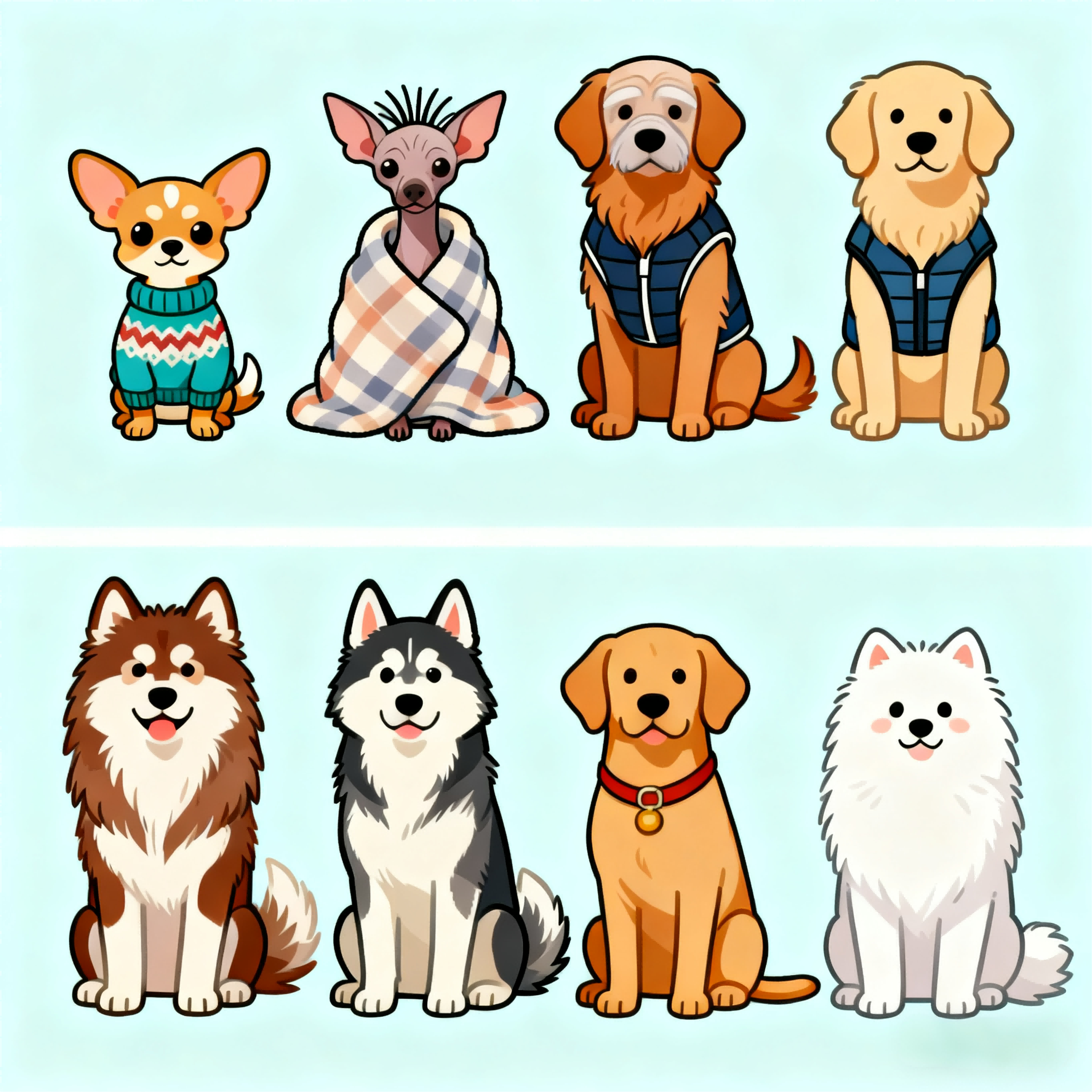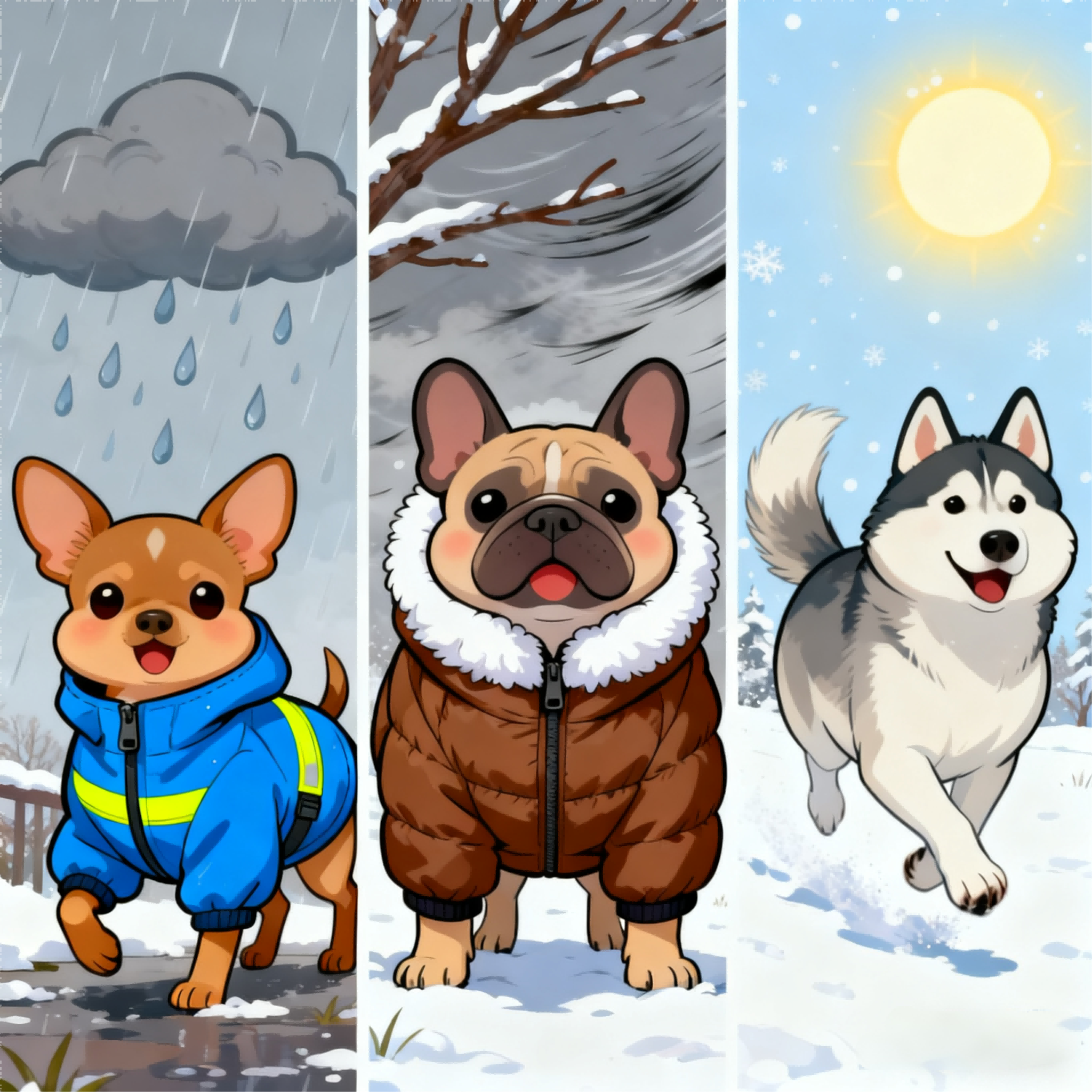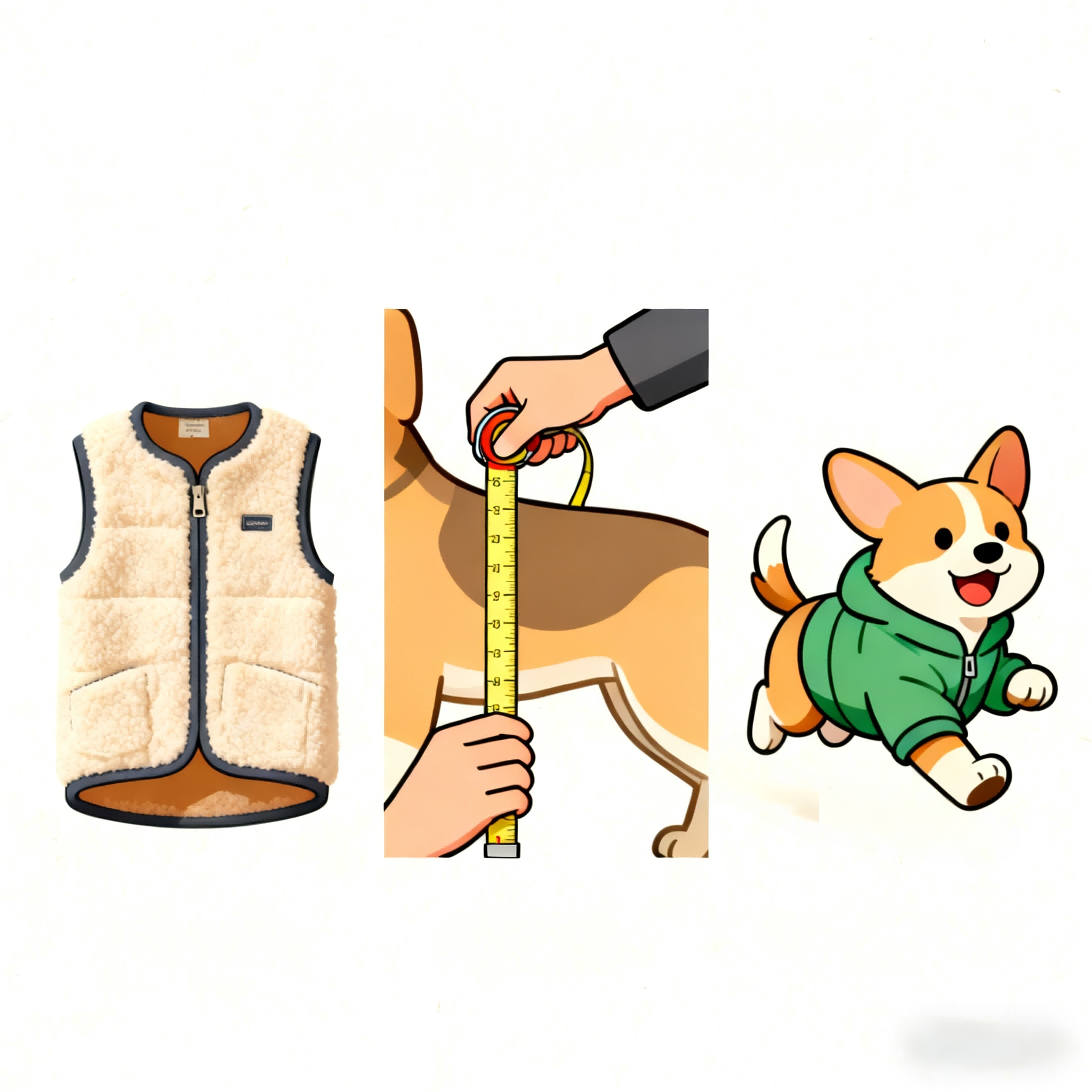As winter temperatures drop, the crisp morning air can feel sharp enough to sting the throat. For many pet owners, this raises a common question during daily walks: Does my dog need winter clothes to stay warm and safe? The truth is, not all dogs require extra layers in winter. In fact, unnecessary clothing can sometimes do more harm than good. Below, we break down the core considerations—weather, your dog’s individual traits, and clothing quality—to help you make the best choice for your furry companion.

1. Weather: The Primary Factor for Winter Clothing
Whether your dog needs clothes depends first on actual outdoor conditions, not just low temperatures. Focus on these three scenarios:
- Rainy, snowy, or damp weather: For most dogs, dampness is more dangerous than cold. Rain or snow soaks their fur, causing rapid heat loss and increasing the risk of chills. A waterproof, warm coat is highly recommended in such conditions.

- Windy, freezing weather: When strong winds hit or the wind chill drops below 0°C (32°F), even dry cold can trouble short-haired or small dogs. Bring a coat along and decide whether to put it on based on your dog’s behavior.
- Calm, sunny cold days: If the weather is clear and windless, healthy medium-to-large breeds (e.g., Huskies, Golden Retrievers) usually don’t need clothes—their natural fur provides sufficient insulation.
Pro Tip: Watch for signs your dog is cold: shivering, seeking warm spots, slow movements, or anxious behavior. If you notice these, dress them immediately or head indoors.
2. Your Dog’s Traits: Breed, Age, and Health Matter Most
Beyond weather, individual differences are critical. A dog’s breed, age, and health status directly impact their ability to tolerate cold. Here’s how to categorize their needs:
Dogs That Typically Need Winter Clothes
- Small/extra-small breeds: Their small size means a larger surface area relative to body mass, leading to faster heat loss. Examples include Chihuahuas, Miniature Pinschers, and Toy Poodles. Even healthy adults benefit from layers in winter.
- Short-haired or hairless breeds: Without a thick “natural coat,” these dogs lack insulation. Breeds like Whippets, Greyhounds, Pugs, and French Bulldogs need warm clothing when outdoors.
- Senior dogs, puppies, or sick dogs: Seniors have slower metabolism; puppies haven’t fully developed temperature regulation; and sick dogs (e.g., recovering from colds or skin issues) have weaker immunity. All three groups struggle to stay warm, even in mild cold.
- Underweight dogs: Less body fat means less natural insulation. Thin dogs need extra warmth compared to their heavier counterparts.
Dogs That Rarely Need Winter Clothes
Some breeds are biologically equipped to handle cold and may suffer discomfort from clothing:
- Large, long-haired breeds: Dogs like Siberian Huskies, Alaskan Malamutes, Newfoundlanders, Bernese Mountain Dogs, and Tibetan Mastiffs have double coats—waterproof outer layers and insulating undercoats. Clothing can mat their fur, restrict movement, or cause overheating.
- Healthy adult dogs: Breeds such as Golden Retrievers, Labradors, and Samoyeds have strong thermoregulation. They generate enough body heat during activity and don’t need extra layers on calm, cold days.
Note: Dogs with dark fur absorb more sunlight than those with light fur, boosting their natural warmth. Active play also generates significant heat, keeping them cozy during walks.
3. Choosing the Right Clothes: Prioritize Safety and Comfort
If your dog needs winter clothes, poor-quality or ill-fitting options can cause skin irritation or mobility issues. Focus on these three key aspects:
Material: Warmth + Hypoallergenic
- Warmth: In cold northern regions, cotton or down coats offer excellent insulation. Plush fabrics work as a budget-friendly alternative. In wet southern areas, opt for water-resistant materials (e.g., polyester blends) to keep fur dry.
- Safety: Avoid fabrics that irritate skin, such as rough (synthetic fibers) or wool (which some dogs are allergic to). Steer clear of “black cotton” (low-quality) — if your dog licks it, it may cause vomiting or digestive issues.
- Allergy Checks: After putting on new clothes, monitor your dog for 1–2 days. Signs of allergies include frequent scratching, red rashes, sneezing, runny nose, facial swelling, or inflammation. Discontinue use if these occur.

Size: Measure Accurately, Don’t Guess
Never rely solely on the “breed recommendations” from sellers. Use a tape measure to get these key dimensions:
- Body length: From the base of the neck (chest) to the base of the tail (buttocks).
- Shoulder height: From the top of the shoulder to the paw (front leg).
- Chest/abdomen circumference: The widest part of the chest and the area just behind the ribs (abdomen).
- Armpit circumference: Around the area where the front leg meets the chest.
A well-fitting coat should:
- Not be too tight (avoids restricting breathing or running).
- Not be too loose (prevents slipping or tripping).
- Have no small decorations (e.g., bells, sequins) that your dog could chew or swallow.
Weight: Keep It Light
Dogs hate feeling bulky—heavy clothes hinder movement and tire them out, especially puppies (which are still developing bones and joints). Choose lightweight, thin-but-warm fabrics. The goal is to keep them cozy without making them feel like they’re wearing a “spacesuit.”
Conclusion
The golden rule for winter dog clothing is “only when necessary”. Judge based on weather, respect your dog’s breed and health needs, and choose safe, comfortable clothes. Avoid dressing your dog just for aesthetics—prioritize their physical comfort over cuteness. By following these guidelines, you can ensure your furry friend stays happy, healthy, and warm all winter long.
Here’s to enjoyable, safe winter walks with your beloved pet!




